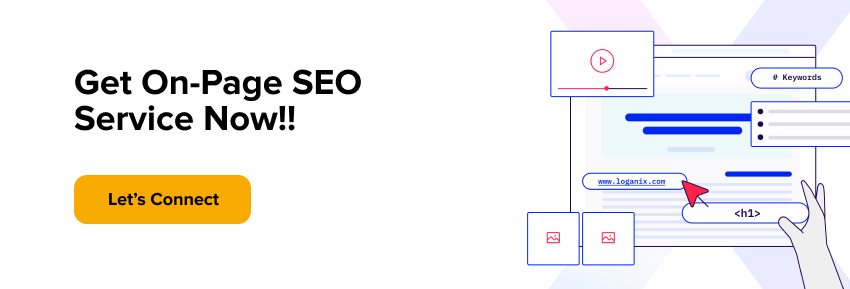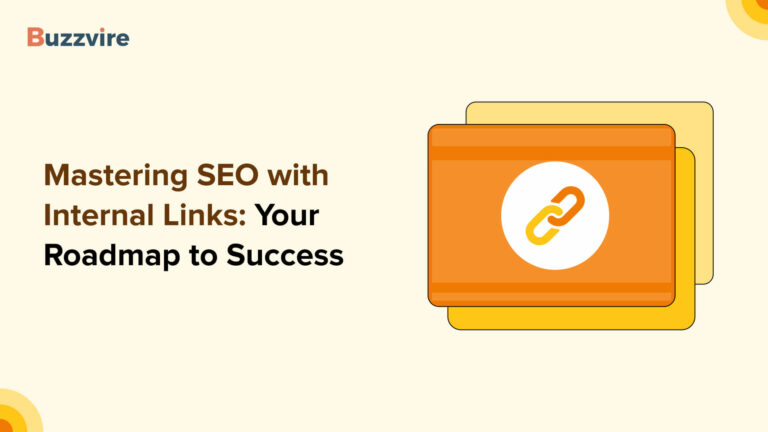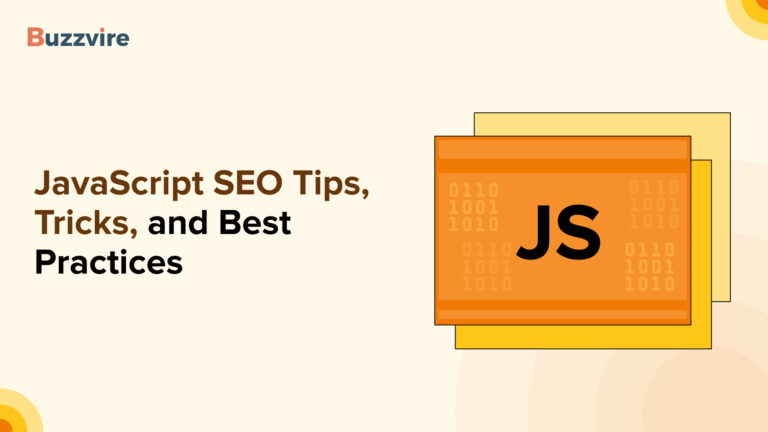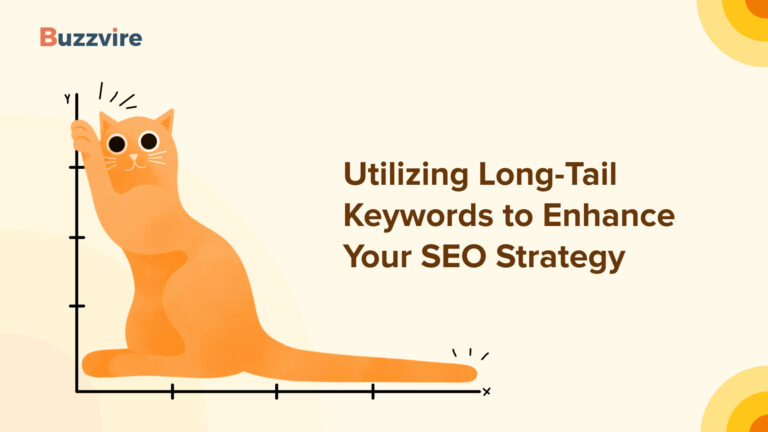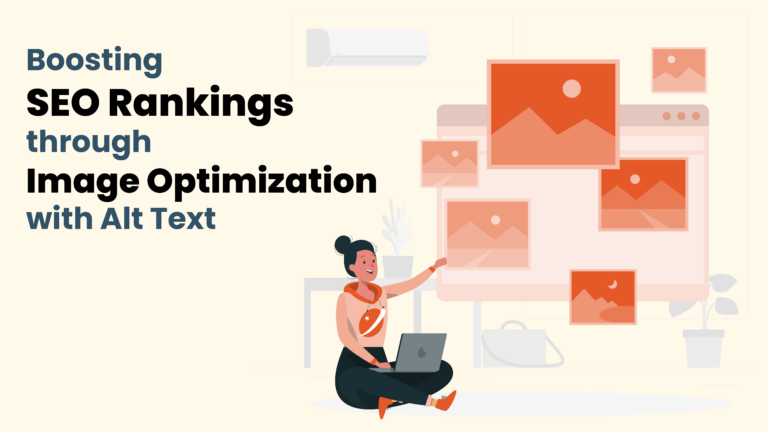Running a website isn’t much different from a real-world shop. You want more customers to visit and buy a lot from you. Like a shop owner would arrange their products on shelves and displays to make them more appealing and accessible to customers, On-Page SEO Optimization involves organizing your website content in a way that’s appealing and accessible to search engines and users(visitors).
Signage and labels help customers find what they’re looking for. Similarly, with on-page SEO, you can use titles, headings, and meta descriptions to guide search engines and users to the most relevant pages on your website.
Keywords are like the products in a shop – they’re what people look for. So it’s all about strategically placing your keywords on your website content to make it more visible and relevant to search engines to serve what users ask in their queries.
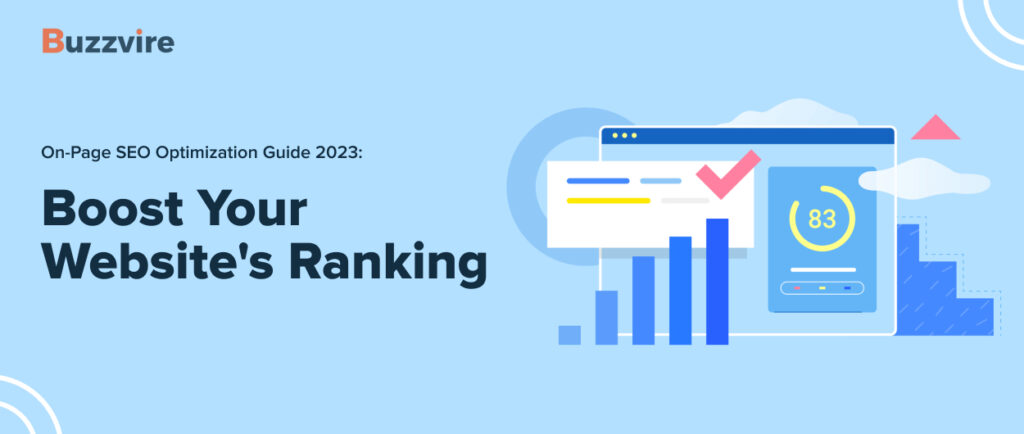
And just as a shop owner would regularly restock their shelves and rearrange their displays to keep things fresh and appealing, it’s a great practice to keep website content new, relevant, and updated.
Now that we’re clear about what On-Page SEO Optimization is, let’s add to your cart some techniques, common mistakes, and checklists you’ll need to boost your website’s ranking in 2023. Read on for some of the best Practices for On-Page SEO Optimization.
Conducting Keyword Research
Why is keyword research crucial for on-page SEO optimization?
Finding the right keywords allows you to get closer to your customers. It’s the bridge between you and your users. A user enters a query on the search engine using keywords and key phrases. Then the search engine looks for relevant content on websites like yours to provide users with what they want.
Provide the apt content with an optimized structure, and you’ll increase your chances of improving your website ranking. Understand what words and phrases people use to search for information related to your website. By understanding what people are searching for, you can create optimized content with those keywords, making it easier for search engines like Google and Bing to find and rank your website.
How to conduct effective keyword research?
Say you’re looking for On-Page SEO Optimization for E-commerce Websites. Keyword research begins with seed keywords. It could be product names, industry terms, or common questions related to your e-commerce. Next, cue your competitors by identifying the keywords bringing them traffic. Now, make these keywords work for your website. Ideally, you can also include some secondary keywords or long-tail keywords. They’re easier to rank for and can often lead to higher conversion rates.
Say, “sneakers for sale” may have lower competition but a higher search volume than “ABC sneakers for women.” First, analyze the competition, and identify the ones with lower competition but high search volumes to target in your content creation and optimization efforts. Then, incorporate the targeted keywords into the website’s meta descriptions, titles, and other on-page elements to improve search engine rankings and drive desired traffic to the site.
Tools to use for keyword research
Using the right tools is like making a group of detectives help you uncover hidden gems in your keyword research. On-Page SEO Optimization Techniques demand you cover multiple angles for the user’s query. Generate keyword ideas and analyze their search volume, competition, and relevance with various popular tools (free and paid), including SEMrush, Google Keyword Planner, Moz Keyword Explorer, Ubersuggest, and Ahrefs.
Optimizing Website Content
Why optimizing website content is essential for on-page SEO?
Before discussing content, we’ll assume you’re already in your customers’ shoes. You may have the best products. But if your visitors can’t relate to your product or service with your website’s content, you must include a significant channel to improve your website’s ranking. Incorporating your website content with relevant keywords and structure makes it simpler for search engines to find and rank your website. The result? More traffic to your website, more leads, sales, and conversions.
What are the best practices for optimizing website content?
Although you aim to get your content to rank higher on search engines, the best content seeks human readership. According to a 2022 SemRush study of 24K top articles – readability, tone of voice, and consistency were the factors about content that both people and search engines liked most.
If you want your content to resonate with your readers, you must know who they are, what they’re looking for, the stage of their buyer’s journey, and how they prefer to consume content. Conduct audience research, and analyze your website data to understand your audience’s needs and preferences.
Tips for creating high-quality content that is both User/SEO-friendly
Provide your visitors with content that solves their problems, answers their questions, or valuable information not found elsewhere. Visual content is a powerful way to engage users. Use descriptive alt text, file names, and captions to help search engines understand your visual content.
Maintaining the right balance between optimized content per SEO practices and engaging your readers takes time and effort.
Use HTML tags, bullets, and numbered lists to help users know the most important parts of your content. H1 is for your title or most important information. Other lesser but important subheadings can come under H2 or H3. This practice achieves a win-win for both human readability and search engines to understand the website structure and hierarchy.

Improving Website Structure
Why is improving website structure important for on-page SEO?
Imagine visiting a library with books scattered randomly throughout the shelves without any categorization. A disorganized library and website make it challenging for visitors to find what they want. On the other hand, website structure makes navigation simpler.
Search engines use crawlers to scan your website’s pages. A well-structured website makes it easier for these crawlers to navigate and understand your content. Thus, search engines are more likely to index your pages correctly and present them to users in relevant search results. In addition, a well-structured website makes users spend more time on your website, thus letting search engines know your site is SEO-friendly.
Best practices for improving website structure

As your site grows, it tends to add more links and data, making it cluttered. It’s best to initially plan your future site growth to avoid trouble and scrambling later. Here we enlist the on-Page SEO optimization checklist for establishing a proper website structure:
- Clear hierarchy: Broader or important pages at the top and individual product pages lower
- Use descriptive URLs: Easy to understand the content of the page from the URL
- Header tags: Use tags like H1, H2, and H3 to better present content
- Use a sitemap: File with links to all pages on your website for engines’ crawling and indexing
Tips for making your website easy to navigate for users and search engines
For improved search engine rankings, increased traffic, and a better user experience, your website must be well organized, even for a first-time visitor. Navigation supports a visitor’s easy movement from one page or section to another. In addition, you may include a global search bar if your website has several pages or products.
Optimizing Website Speed and Performance
Why website speed and performance are critical for on-page SEO
Easy navigation, website structure, and speed are some cues for search engines to rank your website higher. Pay close attention to the technology used to develop the website and the precise design of website pages. Search engines want users to visit websites that are safe, relevant, and give a positive experience. Page and site speed are crucial to how search engines rate your pages. Websites that load fast and quickly in transition between pages enhance your user’s experience. Ensure to have a faster website to complement your on-page SEO efforts.
Best Practices for website speed and Performance
If three seconds is enough time to load a website is still an open discussion. But the universal truth is – the faster, the better. Below are a few practices to improve your website speed and performance:
- Have a good quality hosting
- High-quality and fast-loading media (images and video)
- Minimize server requests
- Minify resources
- Implement a Content Delivery Network (CDN)
Tools to use for website speed and performance analysis

A slow website can cause high bounce rates, lower search engine rankings, and reduced user satisfaction. Try the below widely-used free and paid tools to know the areas affecting your website speed and performance:
- Google PageSpeed Insights
- GTmetrix
- Lighthouse
- Pingdom
Utilizing Rich Snippets and Schema Markup
Why utilizing rich snippets and schema markup is important for on-page SEO
Think of rich snippets and schema markup as a small banner outside the shop giving visitors important information about your reviews, ratings, prices, etc. If you were to conduct On-Page SEO Optimization for Local Businesses, customer ratings and timings would matter a lot. You could include this in your scheme markup and rich snippets.
Rich snippets can also improve the user experience by providing more information about your business, which helps users make more informed decisions about which search results to click.
Schema markup is a code that is added to the HTML of a website to provide more structured data about the content, making it easier for search engines to understand what the page is about. Rich snippets and schema markup can help your website stand out from the competition in the search engine results pages
Best practices for using rich snippets and schema markup

Follow these tips to make the best out of rich snippets and schema markup:
Keep markup up to date: Update the markup with your website’s most current and accurate information
Follow schema.org guidelines: Follow the guidelines provided by schema.org for consistency and accuracy
No overuse of markup: Overusing markup may result in penalties from search engines
Choose the right snippet type: Google Chrome supports nearly thrice more snippet types than Bing. Check which one best describes your business.
Conclusion
The ultimate goal of On-page SEO Optimization is to improve ranking in the SERPs. You mustn’t sacrifice content aimed at your customers to gain higher rankings. What good is it if your pages rank well but fail to capture your audience’s attention? On-page requires attention to detail and keeping up with the latest trends. At times your pages won’t move higher in rank despite the effort. Conduct a site audit, check this guide, and check if you still need to include anything. Know what’s getting your competitors their traffic and keep your site updated with content that adds value to your customers.
FAQs:
On-page SEO optimization involves tweaking your website content and HTML to improve ranking in the search engine result pages. In addition, it helps bring relevant audiences to visit your content, increasing your chances of converting them to customers.
You can better your website ranking through good keyword research, relevant website content, and a website that loads faster, is simple to navigate, has a clear and logical structure, and utilizes rich snippets and schema markup.
Creating high-quality and engaging content is vital to attracting and retaining visitors to your website. The better the content, new visitors will add to your site, signaling to search engines about your site’s authority and value.
More users are accessing websites on mobile devices, prioritizing mobile-friendliness for on-page SEO optimization. Develop your mobile website with a responsive design and legible fonts and sizes for smaller screens. Use various tools, devices, and operating systems to ensure your website has a standard user experience.
On-page SEO optimization is a regular and continual activity. Unfortunately, not keeping your website content up-to-date is among the most common errors. Some typical slip-ups to avoid in on-page optimization are poor keyword research, irrelevant content or keyword stuffing, and missing title tags and meta descriptions.
